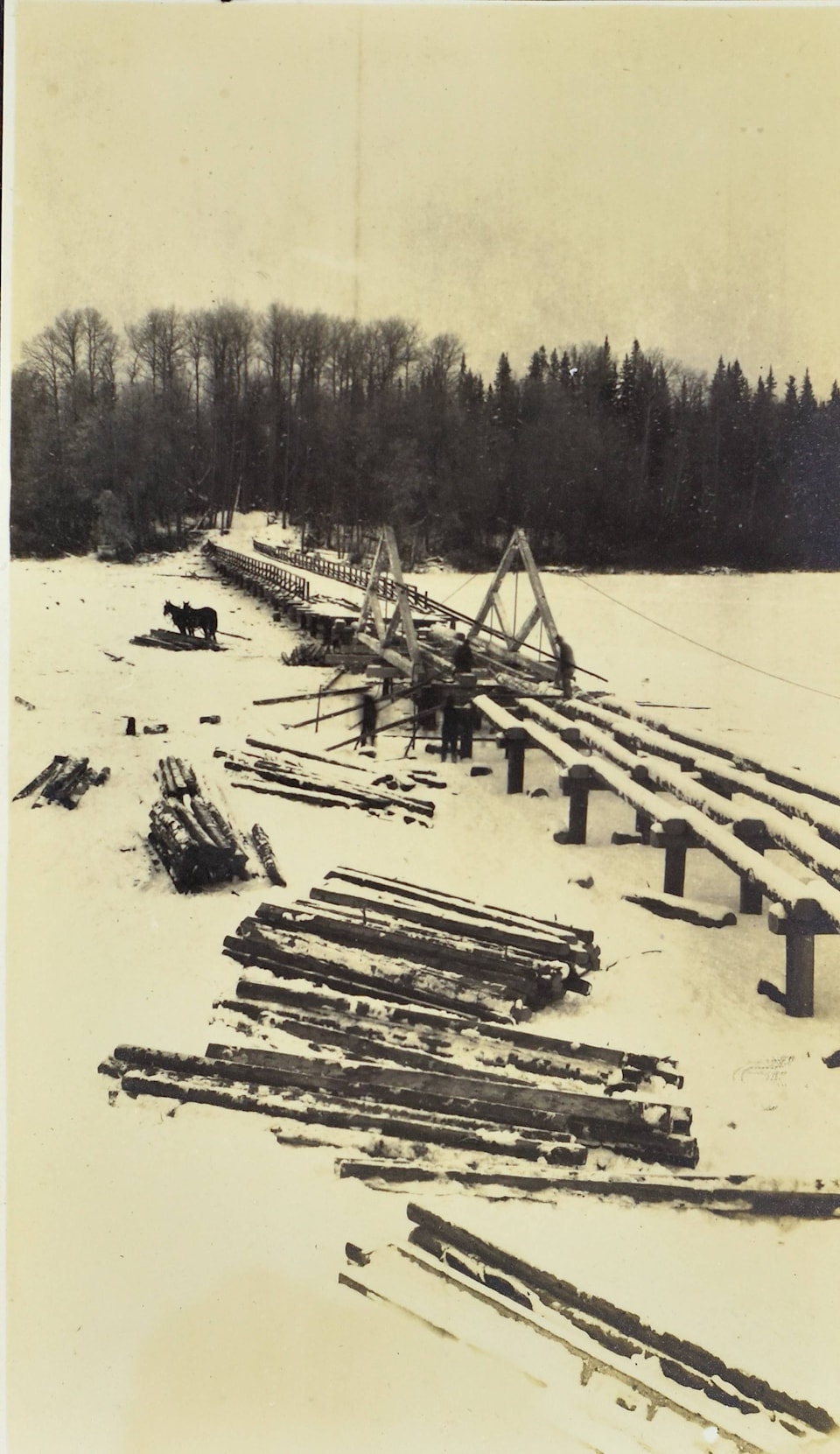In the early 1900s, men and women living in the Lakes District took whatever employment was available. In 1911, those not working on construction of the Grand Trunk Pacific Railway began building a bridge to connect the north shore of Burns Lake and Gerow Island.
Only a narrow trail led from the rail line to the lake. Patrick (Paddy) Carroll and his brother Bill, two of many involved in the bridge project, cut a road from the railway tracks to the lakeshore, eliminating the small trail and improving travel considerably.
By the time Johanna Christensen arrived here in 1916, the bridge had been in use for several years. The route to it, however, was still something less than a road.
“l arrived by train between three and four in the afternoon and spoke to a man piling mail sacks in a wagon,” she wrote years later. “He was the mail driver between the station and Francois Lake. He had to take the mail sacks to Jim McKenna’s farm, one mile west of the station.
“He pointed out a trail between the willow bushes and told me to follow it until I came to a white bridge,” Christensen continued. “He was to meet me there for the trip to Francois Lake. As I walked through the bush I looked warily around for wild animals. The mail driver picked me up and we crossed a bridge to Gerow Island where there was a store and an inn. After staying the night, I left the island with the mail driver, crossing over a road of corduroy, a bridge like structure, to the mainland.”
Original pioneer bridge was replaced in 1929, but remained in use for decades after.
Fast forward to June 1957. Everyone in town waited anxiously as 15 tons of steel, plus the weight of a truck and trailer, made its way toward the old pioneer bridge across Burns Lake, which had a load limit of only 12 tons. The six 15-ton steel sections, destined for use in repairing the Aluminum Company of Canada’s Skins Lake spillway, were the largest packages ever to arrive in Burns Lake by Canadian National Railway express freight.
Much to everyone’s relief, the load crossed without incident. Shortly thereafter, however, the bridge developed a serious dip at its southern end. The structure was closed and repaired, but a day or two later, two sets of piles supporting the decking slipped. For a time, heavy trucks could not enter Burns Lake from the south, and light traffic crossed at its own risk.
A year earlier, at the third annual Northern Trans-Provincial Highway 16 Conference, BC’s Deputy Minister of Highways Evan Jones had announced that Burns Lake would get a new bridge, and the problems added urgency to the project.
The firm of A.B. Sanderson, Consultant Engineers, designed a new state-of-the-art, concrete-and-steel structure to replace the one built nearly thirty years earlier. Jamieson Construction was selected to build it, and the company’s first order of business was fabrication of a temporary bridge or “falsework” to support its massive pile driver. The lake bottom in the channel was so soft there that steel pilings had to be driven to a depth of more than 100 feet.
More than 233 yards in length and eight yards wide, Burns Lake’s new bridge opened to traffic on November 4, 1957. It remains in use today.
© 2019 Michael Riis-Christianson and the Lakes District Museum Society
